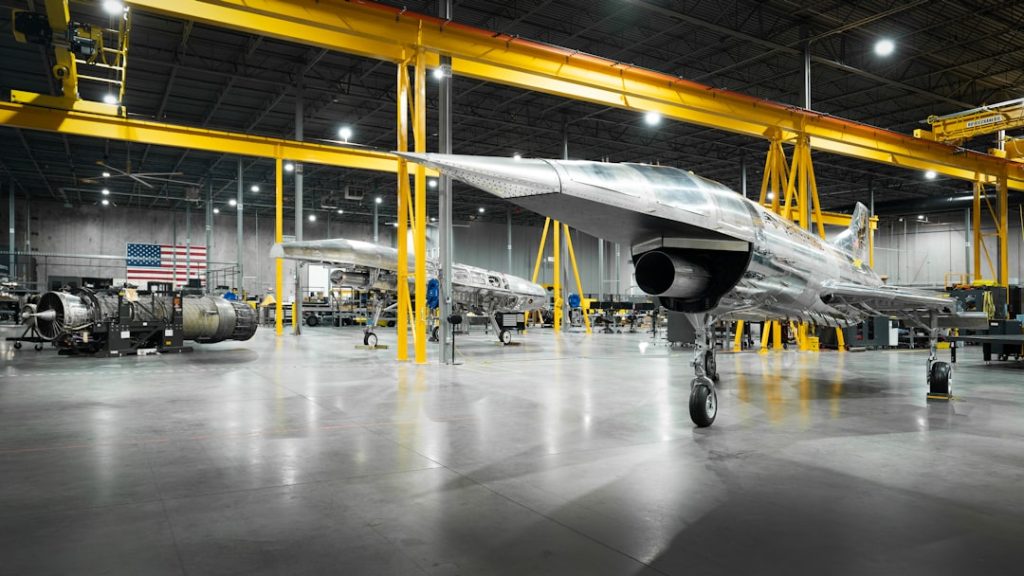Aerospace engineering is a specialized field that focuses on the design, development, and production of aircraft, spacecraft, and related systems and equipment. This discipline encompasses a wide range of activities, from the initial concept and design phases to testing and production. Aerospace engineers are responsible for ensuring that vehicles can withstand the rigors of flight, whether in the atmosphere or in outer space.
The field is divided into two primary branches: aeronautical engineering, which deals with vehicles that operate within the Earth’s atmosphere, and astronautical engineering, which focuses on those that operate outside it. The significance of aerospace engineering extends beyond mere transportation; it plays a crucial role in national defense, space exploration, and advancements in technology. The work of aerospace engineers has led to innovations that have transformed not only how we travel but also how we communicate and gather information.
For instance, satellite technology has revolutionized global communications and weather forecasting, while advancements in aerodynamics have improved fuel efficiency in commercial aviation. As the world continues to evolve, the demand for skilled aerospace engineers remains high, driven by the need for safer, more efficient, and environmentally friendly technologies.
Key Takeaways
- Aerospace engineering involves the design, development, and testing of aircraft, spacecraft, and related systems.
- Education and training for aerospace engineers typically includes a bachelor’s degree in aerospace engineering or a related field, as well as hands-on experience through internships or co-op programs.
- Job opportunities for aerospace engineers can be found in industries such as aerospace manufacturing, government agencies, and research and development organizations.
- Aerospace engineers can expect competitive salaries and benefits, with the potential for advancement and opportunities for specialization in areas such as avionics, propulsion, or aerodynamics.
- Success in aerospace engineering requires strong analytical and problem-solving skills, attention to detail, and the ability to work effectively in a team environment.
Education and Training for Aerospace Engineers
To embark on a career in aerospace engineering, individuals typically need a strong educational foundation in mathematics, physics, and engineering principles. Most aerospace engineers hold at least a bachelor’s degree in aerospace engineering or a related field such as mechanical engineering or electrical engineering. These programs often include coursework in fluid dynamics, materials science, structural analysis, propulsion systems, and control systems.
Hands-on experience is also a critical component of aerospace education; many universities offer laboratory work and design projects that allow students to apply theoretical knowledge to practical challenges. In addition to undergraduate education, many aerospace engineers pursue advanced degrees to enhance their expertise and career prospects. A master’s degree or Ph.D.
can provide deeper insights into specialized areas such as avionics, propulsion technology, or systems engineering. Furthermore, obtaining professional licensure as a Professional Engineer (PE) can be beneficial for career advancement. This process typically involves passing the Fundamentals of Engineering (FE) exam, gaining relevant work experience under a licensed engineer, and passing the Principles and Practice of Engineering (PE) exam.
Continuous learning is also essential in this rapidly evolving field; engineers often participate in workshops, seminars, and certification programs to stay current with new technologies and methodologies.
Job Opportunities in the Aerospace Engineering Industry

The aerospace engineering industry offers a diverse array of job opportunities across various sectors. Major employers include government agencies such as NASA and the Department of Defense, as well as private companies like Boeing, Lockheed Martin, and SpaceX. These organizations require aerospace engineers for roles ranging from research and development to project management and quality assurance.
Additionally, the rise of commercial space travel has opened new avenues for employment in startups focused on space exploration and satellite technology. Beyond traditional roles in aircraft and spacecraft design, aerospace engineers can also find opportunities in related fields such as robotics, automotive engineering, and renewable energy. For instance, the principles of aerodynamics are increasingly applied in the automotive industry to improve vehicle efficiency and performance.
Moreover, aerospace engineers may work on projects involving unmanned aerial vehicles (UAVs), which are gaining traction in sectors like agriculture, surveillance, and logistics. The versatility of an aerospace engineering degree allows professionals to pivot into various industries while leveraging their technical skills and problem-solving abilities.
Salary and Benefits for Aerospace Engineers
| Category | Metrics |
|---|---|
| Median Salary | 116,500 per year |
| Entry-level Salary | Around 72,000 per year |
| Experienced Salary | Around 147,000 per year |
| Benefits | Health insurance, retirement plans, paid time off |
The compensation for aerospace engineers can vary significantly based on factors such as experience level, education, geographic location, and the specific sector of employment. According to data from the U.S. Bureau of Labor Statistics (BLS), the median annual wage for aerospace engineers was approximately $118,610 as of May 2022.
Entry-level positions typically offer salaries in the range of $70,000 to $85,000 per year, while experienced engineers can earn well over $150,000 annually, particularly in high-demand areas or specialized roles. In addition to competitive salaries, aerospace engineers often enjoy a comprehensive benefits package that may include health insurance, retirement plans, paid time off, and professional development opportunities. Many employers also offer flexible work arrangements or remote work options, which have become increasingly popular in recent years.
The combination of attractive compensation and benefits makes aerospace engineering an appealing career choice for many individuals seeking stability and growth in their professional lives.
Skills and Qualities Needed for Success in Aerospace Engineering
Success in aerospace engineering requires a unique blend of technical skills and personal qualities. Strong analytical skills are essential for solving complex problems related to design and performance. Aerospace engineers must be proficient in mathematics and physics to understand the principles governing flight dynamics and structural integrity.
Additionally, familiarity with computer-aided design (CAD) software and simulation tools is crucial for creating detailed models and conducting analyses. Beyond technical expertise, effective communication skills are vital for collaborating with multidisciplinary teams and presenting ideas clearly to stakeholders. Aerospace projects often involve coordination among engineers from various specialties, as well as interactions with clients and regulatory agencies.
Therefore, being able to articulate complex concepts in an understandable manner is a valuable asset. Furthermore, creativity and innovation play significant roles in developing new technologies and improving existing systems; engineers must be able to think outside the box to address challenges that arise during the design process.
Challenges and Opportunities in the Aerospace Engineer Job Market

The aerospace engineering job market presents both challenges and opportunities for aspiring professionals. One significant challenge is the cyclical nature of the industry; economic downturns can lead to reduced funding for projects and layoffs within companies. For instance, during periods of budget cuts or shifts in government priorities, positions may become scarce as organizations scale back their workforce.
Additionally, competition for jobs can be intense due to the limited number of positions available relative to the number of qualified candidates. However, despite these challenges, there are numerous opportunities on the horizon. The increasing focus on sustainability has prompted a surge in research aimed at developing greener technologies for aviation and space exploration.
Innovations such as electric propulsion systems and alternative fuels are gaining traction as industries seek to reduce their environmental impact. Furthermore, advancements in artificial intelligence (AI) and automation are transforming how aerospace engineers approach design and manufacturing processes. Those who adapt to these emerging trends will likely find themselves well-positioned for success in a dynamic job market.
Emerging Trends in Aerospace Engineering
Aerospace engineering is undergoing rapid transformation driven by technological advancements and changing societal needs. One notable trend is the growing emphasis on sustainability within the industry. As concerns about climate change intensify, aerospace companies are investing heavily in research aimed at reducing emissions from aircraft engines and exploring alternative energy sources such as hydrogen fuel cells or electric propulsion systems.
For example, several major airlines are collaborating with manufacturers to develop hybrid-electric aircraft that promise significant reductions in fuel consumption. Another emerging trend is the integration of advanced materials into aerospace design. Lightweight composites are increasingly being used to enhance fuel efficiency while maintaining structural integrity.
Innovations such as 3D printing are also revolutionizing manufacturing processes by enabling rapid prototyping and reducing waste associated with traditional methods. Additionally, the rise of autonomous systems is reshaping how aircraft are operated; unmanned aerial vehicles (UAVs) are being deployed for various applications ranging from delivery services to agricultural monitoring.
Tips for Navigating the Aerospace Engineer Job Market
Navigating the aerospace engineer job market requires strategic planning and proactive engagement with industry trends. One effective approach is to build a robust professional network by attending industry conferences, joining relevant organizations such as the American Institute of Aeronautics and Astronautics (AIAA), or participating in online forums dedicated to aerospace topics. Networking can lead to valuable connections that may result in job referrals or insights into upcoming opportunities.
Additionally, staying informed about emerging technologies and trends within the field is crucial for remaining competitive. Engaging in continuous learning through online courses or certifications can enhance your skill set and demonstrate your commitment to professional development. Tailoring your resume to highlight relevant experiences and skills specific to each job application can also make a significant difference; showcasing projects that align with an employer’s needs can set you apart from other candidates.
Furthermore, consider seeking internships or co-op positions during your academic career to gain practical experience while still in school. These opportunities not only provide hands-on training but also allow you to establish connections within the industry that may prove beneficial when seeking full-time employment after graduation. By combining education with real-world experience and actively engaging with industry developments, aspiring aerospace engineers can position themselves for success in a competitive job market.


